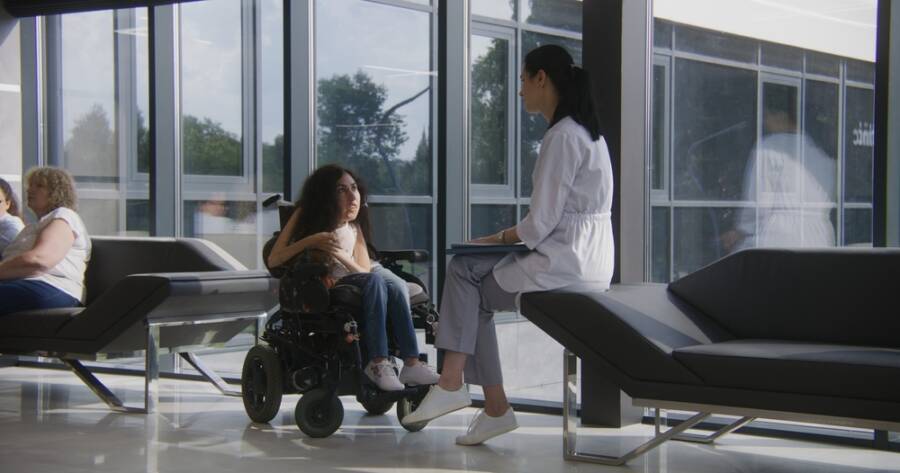Spinal Muscular Atrophy (SMA) is a genetic condition that impacts muscle movement and strength. With SMA, nerve cells in the spinal cord weaken over time, affecting a person’s ability to walk, move, and even breathe. Early diagnosis and treatment make a difference in managing symptoms. Understanding SMA’s signs, symptoms, and available treatments can help those affected live a more comfortable life.
What is Spinal Muscular Atrophy?
Spinal Muscular Atrophy (SMA) is a genetic disease that targets motor neurons—nerve cells that control muscle movement. These neurons, found in the spinal cord, gradually deteriorate in people with SMA, causing muscles to weaken and shrink.
It’s an inherited condition passed through specific gene mutations, meaning someone must inherit the gene from both parents to develop the disease. SMA varies in severity, with some types affecting infants, while others are milder, appearing later in childhood or adulthood.
Recognizing the Signs of SMA in Infants and Children
SMA presents itself differently based on the type, age, and severity. Recognizing the early signs in infants can be crucial for prompt treatment. In infants, common symptoms include:
- Weak muscle tone: Babies may seem “floppy” or have trouble lifting their heads.
- Breathing issues: Some infants have difficulty breathing or may make sounds indicating respiratory weakness.
- Poor reflexes: These babies often have weak or absent reflexes, especially in their arms and legs.
- Movement delays: Motor milestones, such as rolling, sitting, or crawling, may be delayed or never reached.
In children, SMA symptoms might appear as a loss of motor abilities they previously had, such as trouble walking or an unusual walking gait. Fatigue and difficulty lifting objects can also indicate early SMA signs in older children.
Symptoms of SMA in Teenagers and Adults
While SMA often appears in infancy or early childhood, milder forms can emerge later. Symptoms in teens and adults include muscle weakness, especially in the arms and legs, making it difficult to perform daily tasks. Individuals may experience:
- Trouble standing or walking: Weakness in the hips, shoulders, and legs often causes balance issues and a higher risk of falls.
- Tiredness and fatigue: Muscle weakness in SMA can cause constant fatigue, even after mild physical activity.
- Difficulty with fine motor tasks: Actions such as buttoning shirts or writing may become challenging.
Teenagers or adults with SMA may also struggle with breathing or swallowing, though these symptoms tend to be milder than those seen in more severe forms of SMA.
Types of SMA and Their Unique Symptoms
SMA is divided into four main types, each with distinct symptoms and progression:
- Type 1 (Severe SMA): This type appears in infants, usually within the first six months of life. Babies with Type 1 SMA have significant muscle weakness, difficulty breathing, and require extensive care.
- Type 2 (Intermediate SMA): Children with Type 2 often develop symptoms between 6 and 18 months. They may sit up but often can’t walk or stand without assistance.
- Type 3 (Mild SMA): Symptoms typically show up after 18 months and can appear in childhood or adulthood. Type 3 is generally less severe; individuals can walk but may struggle with stairs or physical activities.
- Type 4 (Adult-Onset SMA): The rarest type, Type 4 SMA, starts in early adulthood. Symptoms develop slowly and are typically mild, with limited muscle weakness that doesn’t significantly impact daily life.
Available Treatments for SMA
While SMA currently has no cure, treatments have advanced, offering hope for better symptom management and quality of life. Some common treatments include:
Medications
New medications like Spinraza, Zolgensma, and Evrysdi target the genetic causes of SMA. Spinraza, for example, is injected directly into the spinal fluid to boost motor neuron survival. Zolgensma, a one-time gene therapy, is used in young children to replace the faulty gene responsible for SMA.
Physical and Occupational Therapy
Regular physical and occupational therapy can help maintain strength and mobility in individuals with SMA. Therapists create routines tailored to each person’s abilities, aiding in tasks like standing, walking, and other daily movements.
Assistive Devices
For those with significant muscle weakness, devices like braces, wheelchairs, and ventilators can offer support. These devices make it easier to perform daily activities while reducing fatigue and strain.
Respiratory Support
Respiratory therapy and devices such as ventilators or cough-assist machines help those with SMA who have trouble breathing. This support is especially crucial for severe types of SMA, where respiratory health is a major concern.
Ongoing Research and Emerging Therapies
Research in SMA treatment continues to advance, with promising therapies on the horizon. Stem cell research, for example, looks at ways to replace damaged motor neurons, potentially slowing the progression of the disease.
Clinical trials exploring gene-editing techniques also aim to correct the genetic mutation that causes SMA at its source. While these treatments are still experimental, they represent hopeful steps forward for those affected by SMA.
Learn More About Spinal Muscular Atrophy
Spinal Muscular Atrophy is a complex condition, affecting muscle strength and movement in various ways. Early diagnosis allows for timely treatment, which can significantly improve comfort and function.
Today’s treatments—from specialized medications to supportive therapies—give individuals with SMA the tools to manage symptoms and enjoy a higher quality of life. As research progresses, the future looks promising for more effective and innovative SMA therapies.
